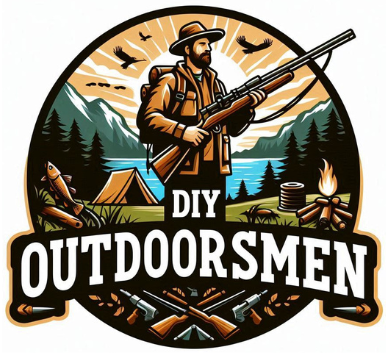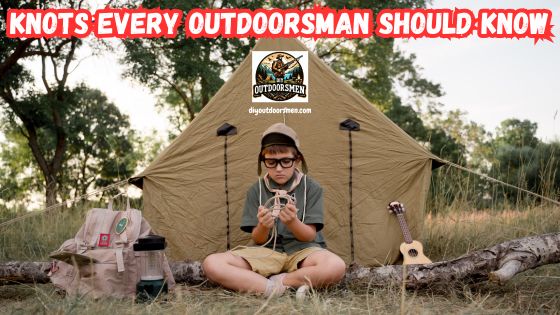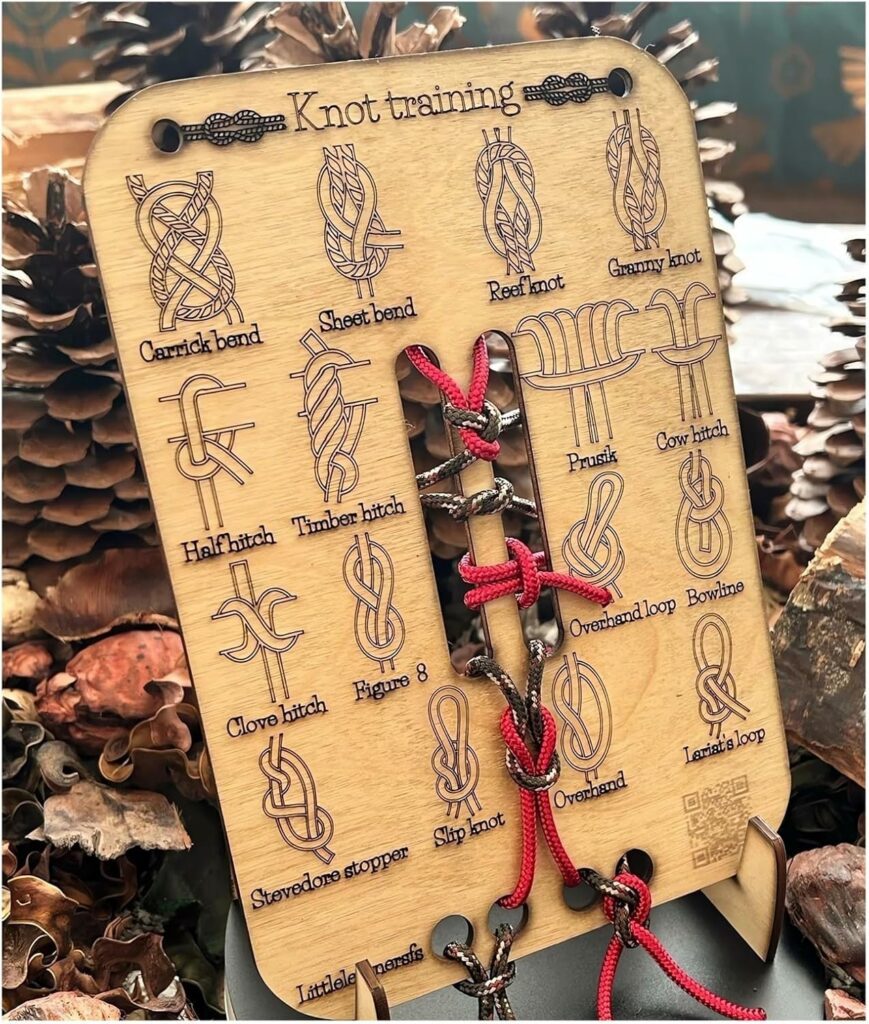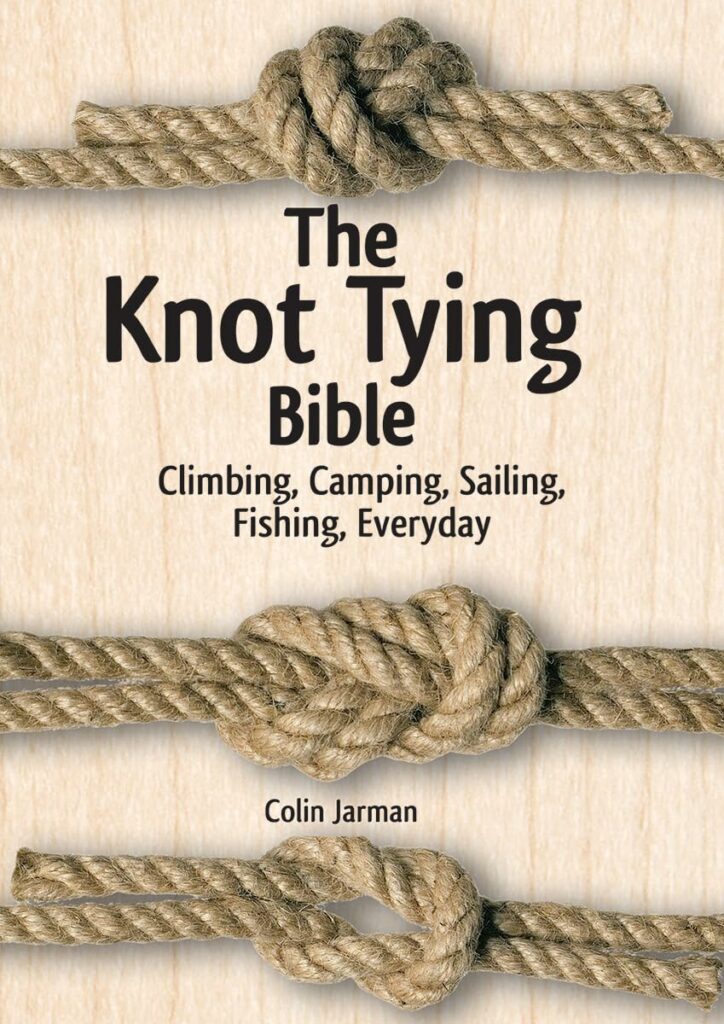Contents
- 1 Why Knots Matter in the Wilderness
- 2 Overview of the Key Knots
- 3 When and How to Use Each Knot
- 4 Tools That Complement Good Knot-Tying Skills
- 5 Practical Tips for Learning and Practicing Knots
- 6 Common Challenges in Knot Tying and How I Overcame Them
- 7 Advanced Techniques for the Outdoor Enthusiast
- 8 Frequently Asked Questions
- 9 Wrapping Up the Essentials
I have spent many years in the wilderness, learning that knowing a few key knots can mean the difference between a safe journey and a challenging situation. Whether I am securing a shelter, tying up gear, or joining ropes together, having a handful of reliable knots in my repertoire has proven invaluable in countless scenarios during my outdoor adventures.
QUICK LOOK: Knots Every Outdoorsman Needs to Know
- Bowline: This knot creates a strong, fixed loop that holds even under significant load. It is ideal for attaching a rope to a sturdy object like a tree or for creating loops that secure tools and equipment.
- Clove Hitch: This knot is my choice for attaching rope quickly to cylindrical objects such as posts or tree branches. Its simplicity and load-bearing strength make it one of my go-to knots when setting up temporary structures or anchoring gear.
- Sheet Bend: When it comes to joining two ropes of different sizes, the sheet bend really comes through. I use it to extend my rope length by connecting cords, which is especially useful in creating shelter lines or in emergency rescue setups.
- Trucker’s Hitch: This knot offers a strong mechanical advantage, making it perfect when I need to cinch down tarps or secure heavy equipment quickly. Its ability to tighten a load under pressure is vital in windy or rapidly changing weather conditions.
- Square Knot: Also known as the reef knot, this simple knot works well to join two rope ends securely. I often use it for bundling items together or even for temporary first aid applications.
- Taut-Line Hitch: An adjustable knot, the taut-line hitch is extremely useful when I need to fine-tune tension. Whether I am setting up a tent or need to secure a guy line for a shelter, its ability to be adjusted without completely undoing the knot is indispensable.
- Two Half Hitches: One of the simplest yet most reliable knots, the two half hitches are perfect for anchoring a line to a fixed object.
When I head into the wild, every detail matters. Over time I have honed a small set of knots that have helped me overcome obstacles and simplify tasks. My routine kit includes the bowline, clove hitch, sheet bend, trucker’s hitch, square knot, taut-line hitch, and two half hitches.
Each knot is designed for a specific use, and knowing when to use one can greatly improve the safety and efficiency of any outdoor setup. Mastering these knots has not only boosted my confidence but also provided me with a practical skill set for tackling unexpected challenges in nature.
Why Knots Matter in the Wilderness
Being well-prepared for the outdoors is very important to me. Knots are much more than a means to tie rope; they are essential tools that secure loads, build makeshift shelters, and even play a role in life-saving rescue techniques.
Understanding the purpose and function of each knot means you can adapt quickly when conditions change. I always make sure my set of knots is second nature, allowing me to focus on the task at hand even when the situation is rapidly evolving.
For example, when packing for a trip I take a moment to review which knots I will need, ensuring that I know how to tie each of them quickly and firmly. This kind of preparedness not only reduces stress but also minimizes the risk of equipment failure when every second matters.
Overview of the Key Knots
Below is an introduction to the fundamental knots every outdoorsman should know. I have used each of these knots in real-life situations, and they consistently serve their intended purpose:
- Bowline: This knot creates a strong, fixed loop that holds even under significant load. I value its ease of untying once the tension is relaxed. It is ideal for attaching a rope to a sturdy object like a tree or for creating loops that secure tools and equipment.
- Clove Hitch: This knot is my choice for attaching rope quickly to cylindrical objects such as posts or tree branches. Its simplicity and load-bearing strength make it one of my go-to knots when setting up temporary structures or anchoring gear.
- Sheet Bend: When it comes to joining two ropes of different sizes, the sheet bend really comes through. I use it to extend my rope length by connecting cords, which is especially useful in creating shelter lines or in emergency rescue setups.
- Trucker’s Hitch: This knot offers a strong mechanical advantage, making it perfect when I need to cinch down tarps or secure heavy equipment quickly. Its ability to tighten a load under pressure is vital in windy or rapidly changing weather conditions.
- Square Knot: Also known as the reef knot, this simple knot works well to join two rope ends securely. I often use it for bundling items together or even for temporary first aid applications, appreciating its straightforward construction and reliable hold.
- Taut-Line Hitch: An adjustable knot, the taut-line hitch is extremely useful when I need to fine-tune tension. Whether I am setting up a tent or need to secure a guy line for a shelter, its ability to be adjusted without completely undoing the knot is indispensable.
- Two Half Hitches: One of the simplest yet most reliable knots, the two half hitches are perfect for anchoring a line to a fixed object. I frequently rely on this knot when preparing a campsite or securing gear during rapid weather changes.
When and How to Use Each Knot
Over the years I have learned that choosing the right knot for the right situation can streamline tasks in the wilderness. Here are some common scenarios and the knots that work best in each case:

- Bowline: Best used when you need a dependable loop that can bear weight. If you need to fasten a rope around a tree to hang gear or secure a tarp, the bowline offers a combination of strength and easy release.
- Clove Hitch: Ideal for quick attachments, this knot is perfect when you want to secure a rope to a fixed object such as a post or branch. Its ease of tying under pressure makes it very useful in rapidly changing conditions.
- Sheet Bend: When faced with the challenge of merging ropes of different thicknesses, the sheet bend effectively bridges the gap. I use it to create longer lines by connecting shorter ropes, an approach that is particularly useful in improvised shelter construction.
- Trucker’s Hitch: This knot is excellent when a strong mechanical advantage is needed. For instance, when securing a heavy tarp in high winds or fastening cargo, the trucker’s hitch allows me to tighten the rope securely and efficiently.
- Square Knot: A reliable choice for tying items together when movement is minimal. Its use in bundling ropes or creating temporary bindings is something I often rely on during base camp preparations.
- Taut-Line Hitch: This adjustable knot is beneficial in scenarios that demand tension adjustments after the initial tie. Whether it’s setting up a shelter or securing a rope line, this knot’s flexibility makes it very practical.
- Two Half Hitches: The two half hitches are my reliable option when anchoring a rope to a post. Their straightforward tie and firm hold mean I can quickly secure a line even in adverse conditions.
Tools That Complement Good Knot-Tying Skills
Even with a solid understanding of knot tying, having the right equipment can really give a boost to your outdoor activities. The quality of your rope is paramount; I prefer ropes that are both durable and flexible. Such ropes handle stress better and are easier to work with in challenging situations.
Weather conditions can also influence the behavior of knots. I always choose ropes that resist moisture and remain workable in cold temperatures. When facing rain or high humidity, synthetic or treated ropes help keep knots secure and prevent them from becoming too stiff or slippery.
In addition to having a good rope, I maintain a small kit of essential tools including a sharp knife, a multi-tool, and basic repair materials. These implement choices mean that if a knot needs to be re-tied or adjusted, I am prepared to act quickly and effectively.
Practical Tips for Learning and Practicing Knots
Anyone looking to gain competence in knot tying should set aside time for regular practice. Learning in controlled environments and then moving to more challenging real-life scenarios has made a big difference in my skills. Here are some tips that have worked well for me over the years:
- Practice each knot repeatedly until the process becomes almost automatic. Regular practice in different settings reinforces familiarity and confidence.
- Experiment with different types of rope to understand how various materials behave. This practical experience can be crucial when the ideal rope isn’t available.
- Create a mental checklist of knots for various situations. Before any trip, I mentally run through which knots will be necessary so that I am ready when the time comes.
- Keep a simple, clear instructional guide handy. Step-by-step diagrams on weatherproof material can be a great asset when you need a quick reminder in the field.
- Ask experienced outdoors enthusiasts for advice. Learning from those who have spent significant time in nature provides insights that you might not learn from books alone.
In my experience, regular hands-on practice in both calm and challenging environments has been key to refining my knot-tying abilities. Whether at base camp or traversing difficult terrain, the confidence born of practice helps ensure that my knots always perform when needed.
Common Challenges in Knot Tying and How I Overcame Them
Even with frequent practice, I sometimes run into challenges while tying knots. Wet ropes, cold weather, and even physical fatigue can interfere with the process. Over time, I have adopted several strategies to overcome these hurdles:
- Handling Wet or Icy Ropes: When ropes are wet they can be very slippery, and cold conditions tend to make them stiff. In these cases, I take extra time to ensure that each knot is securely tied. I also use ropes specifically designed for harsh weather, which provide a better grip under adverse conditions.
- Maintaining Muscle Memory: In situations where nerves might get the best of me, I rely on muscle memory built up through repeated practice. Staying calm and following each step deliberately has helped me avoid mistakes and prevented potential hazards.
- Adjusting When Things Go Wrong: Occasionally a knot may not hold as expected. In these instances, I simply re-tie the knot or use a backup such as the two half hitches. This pragmatic approach ensures that I always have a secure setup, even if the initial tie falters.
These experiences have taught me that while perfection is rare, a methodical approach and the readiness to adjust can make all the difference in challenging conditions.
Advanced Techniques for the Outdoor Enthusiast
Once I became comfortable with the basics, I started exploring more advanced techniques to further improve my outdoor skills. I stumbled upon the fact that small variations in how knots are tied can have a significant impact on their security and ease of untying when needed.
I began experimenting with modified versions of standard knots, making subtle adjustments to create extra loops for added security or even combining two knots to better suit demanding situations.
For example, I sometimes pair a bowline with an additional half hitch to provide extra safety when suspending heavy loads. This extra measure means that even if one knot is compromised, there is a backup in place.
Advanced strategies also involve a keen understanding of the rope itself. I learned that thinner ropes behave differently from thicker cords, and each requires a slightly different approach when it comes to tension and adjustment. Keeping an eye on rope wear and knowing when to replace it plays a crucial role in ensuring that every knot remains reliable throughout an expedition.
Furthermore, I have integrated regular knot practice into my routine. Even on days when I am not traveling, I set aside time to run through both basic and advanced knots. This consistent practice pays off during unexpected moments when a quick and secure setup is required. The extra time invested in learning these techniques has repeatedly proven its value in the field.
Frequently Asked Questions
Over the years, I have received many questions from fellow outdoor enthusiasts regarding knot tying. Here are a few of the most common queries along with my responses:
What is the best knot to create a secure loop for hanging a load?
I typically use the bowline because it creates a strong, fixed loop that holds up under pressure and can be easily untied once the load is removed.

How can I join ropes of different thicknesses effectively?
The sheet bend is ideal in these cases. It reliably connects ropes of varying sizes, making it perfect for extending rope length for shelters or rescue lines.
Which knot offers the easiest adjustments after being tied?
I prefer the taut-line hitch because it allows me to modify the tension without having to completely re-tie the knot, making it very user friendly in dynamic conditions.
What steps do you take when tying knots in adverse weather?
I select ropes that are designed to perform well in extreme conditions and always double-check my knots. By taking extra care and keeping backup knots ready, I can avoid potential problems when the weather turns harsh.
Wrapping Up the Essentials
Every excursion into the wilderness has reinforced my belief in the importance of mastering a select group of essential knots. From the fixed loop of the bowline to the dependable hold of the two half hitches, these knots form the backbone of any successful outdoor setup.
I have seen firsthand how regular practice and proper preparation make all the difference in critical situations. Understanding the role of each knot and being able to tie them quickly and securely has enhanced my safety and efficiency in the outdoors.
Investing time to learn and practice these techniques has saved me on more than one occasion, and it has built my confidence when faced with unforeseen challenges. I encourage anyone who loves the outdoors to take the time to master these knots. With steady practice, what once seemed complicated soon becomes as natural as breathing.
Remember, it is not just about having the right equipment; it is about knowing how to use what you have in a way that makes your adventures safer and more enjoyable. Each knot you master strengthens your ability to handle the unpredictable challenges of the wilderness.
Take your time, practice consistently, and enjoy the ride of learning these practical skills. May your trips be safe and your knots always hold firm as you explore the beauty and challenges of nature.
Check Out Our Latest Articles:
- 14 Tips And Tactics For Public Land Mule Deer Hunting

- 6 Features of Waterproof Ground Blinds For Wet-condition Elk Hunting

- 4 of the Best DIY Elk Hunting Areas In Colorado

- 8 Tips for Choosing the Best DIY Elk Hunting States

- 5 Hunting Gear Packing List Essentials For DIY Trips

- 7 Tips For Hunting The Elk Migration

As always, stay safe, enjoy the journey and please try to leave it cleaner than you found it. If you have any comments, questions, ideas, or suggestions please leave them in the comment section below and I’ll get back to you ASAP. You can follow us on YouTube: Man Art Creations for videos of our DIY Adventures.
P.S. – Thanks so much for checking out our blog we really appreciate it. Just so you know, we may receive a commission if you click on some of the links that appear on our site. This helps us keep our content free and up-to-date for everyone. We appreciate your support!






